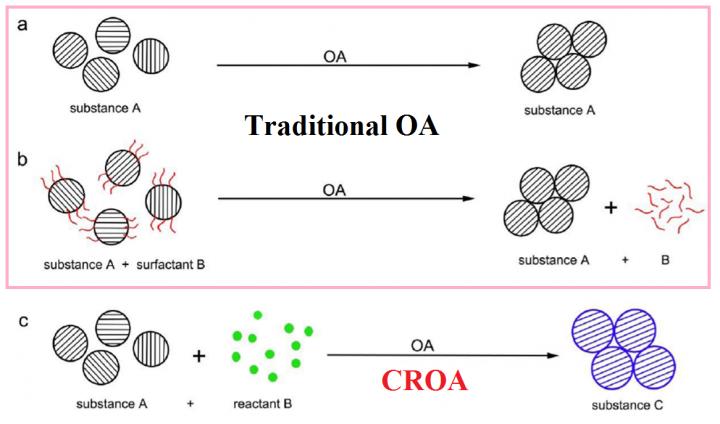
Credit: LIU Yongfei and YANG Yong
Chinese scientists have revealed that a new substance can form during the oriented attachment (OA) process of crystal growth, which may shed new light on the microscopic mechanism of crystal growth.
The research was done by scientists from the Institute of Solid State Physics (ISSP) under the Hefei Institutes of Physical Science, Chinese Academy of Sciences and other collaborative institutions. It was published in Matter on May 29.
Crystallization, a very familiar physical process, occurs both naturally and artificially. The resulting products – crystals – play an important role in modern science and technology. For instance, single silicon crystals play a central role in the semiconductor industry; nonlinear optical crystals – e.g., β-BaB2O4 (BBO) – are indispensable in modern laser technology and experiments on quantum optics; and high-quality single crystalline samples are usually a prerequisite for experimental measurements and studies on novel quantum effects. Therefore, research on crystal growth is always in the spotlight.
Oriented attachment (OA) is a concept that cannot be ignored when it comes to crystal growth (see Background Information). OA is commonly thought to be a physical process whereby nanocrystals align in certain directions to form larger single crystals by interface fusion (Figs. 1a and 1b). Due to this process, the resulting crystals possess both constituent and phase structures identical to those of the precursor nanoparticles.
But is it possible for a new substance to form through OA process?
To answer this question, Chinese scientists conducted a series of experiments and their results provided a positive answer.
By adding NaHCO3 to Y2(CO3)3·2H2O nanoparticle suspensions in an aqueous environment, the researchers obtained single crystalline sheets identified as NaY(CO3)2·6H2O. A similar product ((NH4)Y(CO3)2·H2O) was obtained by adding (NH4)HCO3 to the suspension.
The morphology and atomic structures of the products were characterized by using state-of-the-art experimental methods. Combined with theoretical calculations, the researchers provided convincing evidence that the mechanism governing the synthesis process is a new type of OA (Fig. 1c). The scientists have named the mechanism “Chemical Reaction-directed Oriented Attachment” (CROA).
“We believe that the discovery of CROA will pave a new way for the synthesis of novel functional materials, and deepen the understanding of the mechanism of natural mineral formation,” said QIN Xiaoying, the corresponding author of the work from ISSP.
###
The work was supported by the National Natural Science Foundation of China.
Media Contact
ZHOU Shu
[email protected]
Original Source
http://english.
Related Journal Article
http://dx.




